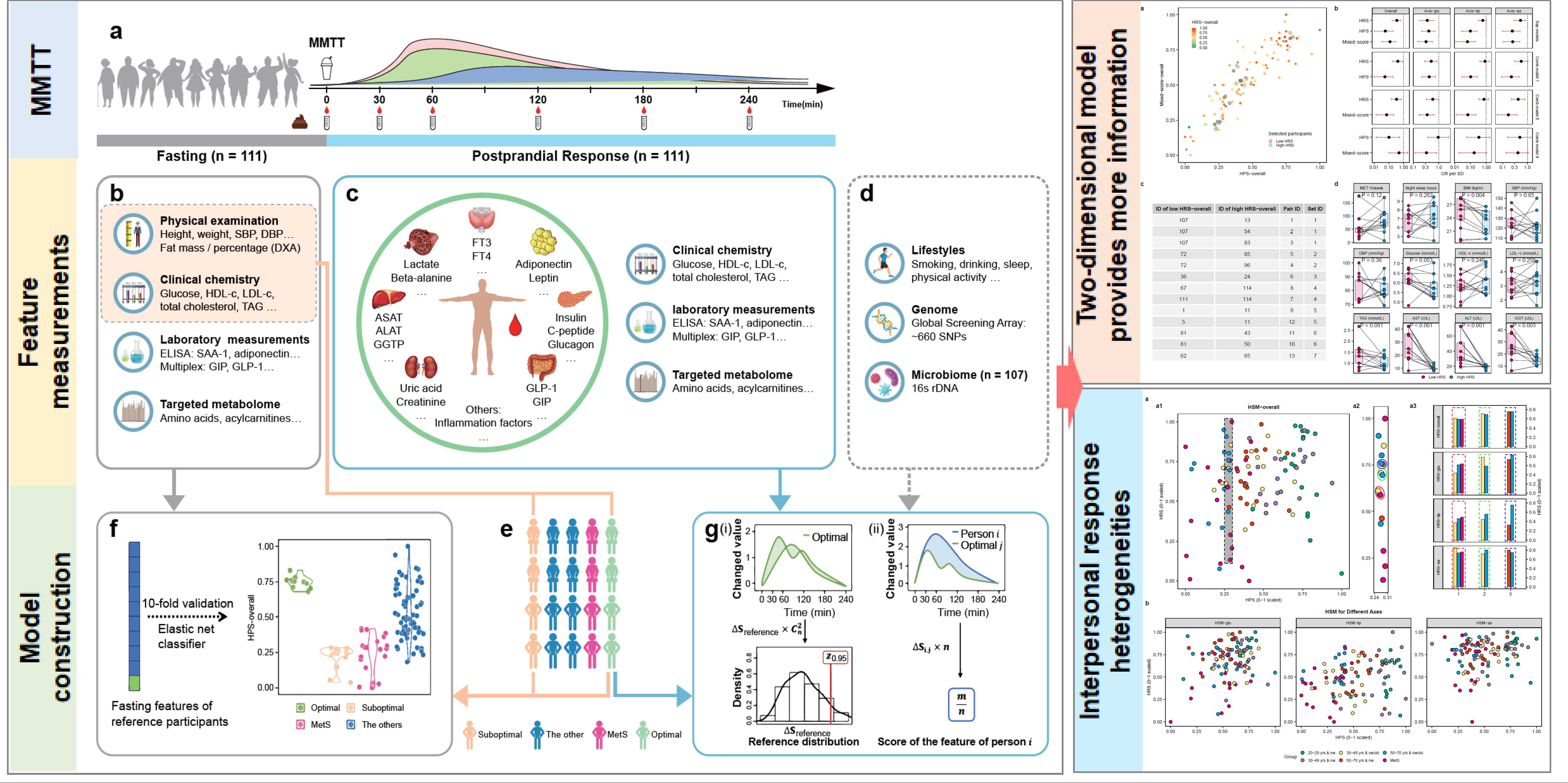Professor LIN Xu’s team from the Shanghai Institute of Nutrition and Health, Chinese Academy of Sciences (CAS), in collaboration with Professors CHEN Luonan and ZENG Rong from the CAS Center for Excellent in Molecular Cell Science and scientists from BYHEALTH Institute of Nutrition & Health, has developed a novel two-dimensional framework, the “Health State Map”, to define metabolic health and nutritional capacity.
Defining metabolic health remains a global challenge, due to a lack of specific quantification criteria or methods. Current disease-based diagnosis under fasting conditions does not adequately detect early signs of dysmetabolism and impaired organ function, which could miss the best window of disease prevention and reversion via effective intervention. Homeostatic resilience, which reflects an individual’s ability to adapt to external interruption(s) like meal intake, has been proposed as an important health criterion and a new approach to holistically define metabolic health. However, thus far, there is still lack of sophisticated methodology to assess postprandial homeostatic resilience.
In this proof-of-concept study, a total of 111 sex-matched Chinese aged 20–70 years with different body weights were recruited. Blood samples were collected at fasting and 5 time-points after a mixed macronutrient tolerance test (MMTT) and were measured by metabolomics and clinical organ/tissue functional biomarkers.
The Health State Map (HSM) was built by integrating a fasting feature-based dimension “Health Phenotype Score (HPS)”, and a postprandial feature-based dimension “Homeostatic Resilience Score (HRS)”. It was shown that the mixed-score, using the same set of fasting and post-MMTT data as HSM in to one-dimension, was highly correlated with HPS. HRS was significantly associated with metabolic syndrome prevalence, independent of both HPS and the mixed-score. Even with similar HPS or the mixed-score, participants with higher HRSs exhibited better liver function and insulin sensitivities than those with lower HRSs, which indicated that HRS provided additional information.
Moreover, large interpersonal variations in postprandial homeostatic resilience for glucose, lipids, and amino acids were observed, even among participants with similar overall HRS values. Additionally, high levels of physical activity and specific gut microbiome compositions were positively associated with HRS, suggesting potential influences on metabolic homeostatic resilience.
“By separated pre- and post-MMTT features, this two-dimensional model is clearly superior to the one dimensional mixed-score model using the same dataset”, said Prof. CHEN Zhengming from University of Oxford, “This would inform future intervention trials to facilitate early detection of organ/tissue dysfunction and facilitate the development of more targeted prevention and treatment strategy.”
Overall, using the new concept and the new strategy established the HSM assessment system that could comprehensively and precisely reflect individuals’ metabolic health and nutritional adaptability. After been validated and improved by future intervention trials, this assessment framework may provide a new solution to facilitate the shifting from currently “disease-centered” to “wellbeing centered” metabolic health assessments.
“This work provides a new perspective and promising means for re-defining metabolic health. It will lead to the development of novel precision nutrition approaches that are urgently needed in the fields of precision nutrition and preventive medicine”, said by Prof. GU Zhenglong from the Greater Bay Area Institute of Precision Medicine (Guangzhou).
Entitled "Two-dimensional health state map to define metabolic health using separated static and dynamic homeostasis features: a proof-of-concept study", this study was published online in National Science Review on November 26, 2024.
This work was supported by the “Strategic Priority Research Program” of the Chinese Academy of Sciences, the BYHEALTH Nutrition and Health Research Foundation, and the Shanghai Municipal Science Technology Major Project.

HSM, a two-dimensional metabolic health defining framework, which constructed with separated fasting feature-based HPS and post- MMTT feature-based HRS. (Image provided by Prof. LIN Xu’s team)
Paper link: https://doi.org/10.1093/nsr/nwae425
Media Contact:
WANG Jin
Shanghai Institute of Nutrition and Health,
Chinese Academy of Sciences
Email: wangjin01@sinh.ac.cn
Web: http://english.sinh.cas.cn/

